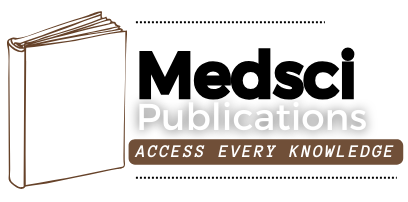Prostaglandins in Induction of Labour
Keywords:
Prostaglandin, induction, labour, cervical ripeningAbstract
Prostaglandins are naturally occurring hormones that play a significant role in the commencement of labour. Prostaglandins have been utilised in clinical practise to ripen the cervix and elicit uterine contractions synthetically since the 1960s. When a woman's cervix is immature (when her Bishop score is less than six), they are more likely to utilise them. Cervical ripening and labour induction are aided by prostaglandins, which work on cervical collagen to relax and dilate the cervix in anticipation of giving birth. It's possible that prostaglandins have a role in inducing uterine contractions. The benefits of prostaglandins in inducing labour are discussed in this article.
References
1. Towers CV, Briggs GG, Rojas JA. The use of prostaglandin E2 in pregnant patients with asthma. Am J Obstet Gynecol 2004;190:1777. Doi: https://doi.org/10.1016/j.ajog.2004.02.056 PMid:15284797
2. Kelly AJ, Malik S, Smith L, Kavanagh J, Thomas J. Vaginal prostaglandin (PGE2 and PFA2a) for induction of labour at term. Cochrane Database Syst Rev 2009;(4):CD003101. Doi: https://doi.org/10.1002/14651858.CD003101.pub2
3. Boulvain M, Kelly AJ, Irion O. Intracervical prostaglandins for induction of labour. Cochrane Database Syst Rev 2008;(1):CD006971. Doi: https://doi.org/10.1002/14651858.CD006971 PMid:18254122
4. Dare R, Middleton P, Crowther CA, Flenady VJ, Varatharaju B. Planned early birth versus expectant management for pre-labour rupture of membranes at term. Cochrane Database Syst Rev 2006;(1):CD005302. Doi: https://doi.org/10.1002/14651858.CD005302.pub2
5. Dodd JJ, van der Goes BY, Pel M, Mol BW, van der Post JA. Morning compared with evening induction of labour. Obstet Gynecol 2006;108;350-60. Doi: https://doi.org/10.1097/01.AOG.0000227746.35565.d9 PMid:16880306
6. ACOG Committee on Practice Bulletins - Obstetrics. ACOG Practice Bulletin No. 107: Induction of labour. Obstet Gyne-col 2009;114(2 Pt 1):386-97. Doi: https://doi.org/10.1097/AOG.0b013e3181b48ef5 PMid:19623003
7. Biem SR, Turnell RW, Olatunbosun O, Tauh M, Biem HJ. A randomized controlled trial of outpatient versus inpatient la-bour induction with vaginal controlled-release prostaglandin E2: effectiveness and satisfaction. J Obstet Gynaecol Can 2003:25;23-31. Doi: https://doi.org/10.1016/S1701-2163(16)31079-9 PMid:12548322
8. Liston R, Sawchuck D, Young D. Fetal health surveillance: antepartum and intrapartum consensus guideline 2007. SOGC Clinical Practice Guidelines, No. 197, September 2007. J Ob-stet Gynaecol Can 2007;29:S3-S36. Doi: https://doi.org/10.1016/S1701-2163(16)32615-9
9. Dowswell T, Kelly AJ, Livio S, Norman JE, Alfirevic Z. Dif-ferent methods for the induction of labour in outpatient set-tings. Cochrane Database Syst Rev 2010;(8):CD007701. Doi: https://doi.org/10.1002/14651858.CD007701.pub2
10. Tan PC, Andi A, Azmi N, Noraihan MN. Effect of coitus at term on length of gestation, induction of labour, and mode of delivery. Obstet Gynecol 2006;108:134-40. Doi: https://doi.org/10.1097/01.AOG.0000223229.83920.af PMid:16816067
11. Foong LC, Vanaja K, Tan G, Chua S. Membrane sweeping in conjunction with labour induction. Obstet Gynecol 2000;96:539-42. Doi: https://doi.org/10.1097/00006250-200010000-00011 PMid:11004355
Downloads
Published
How to Cite
Issue
Section
License
Copyright (c) 2022 Harsh Shah

This work is licensed under a Creative Commons Attribution-ShareAlike 4.0 International License.
Author/s retain the copyright of their article, with first publication rights granted to Medsci Publications.





